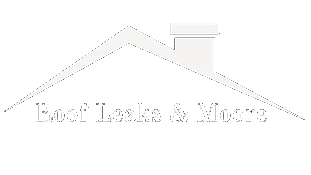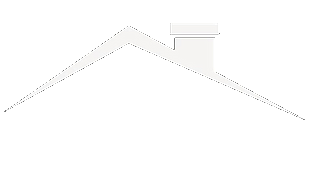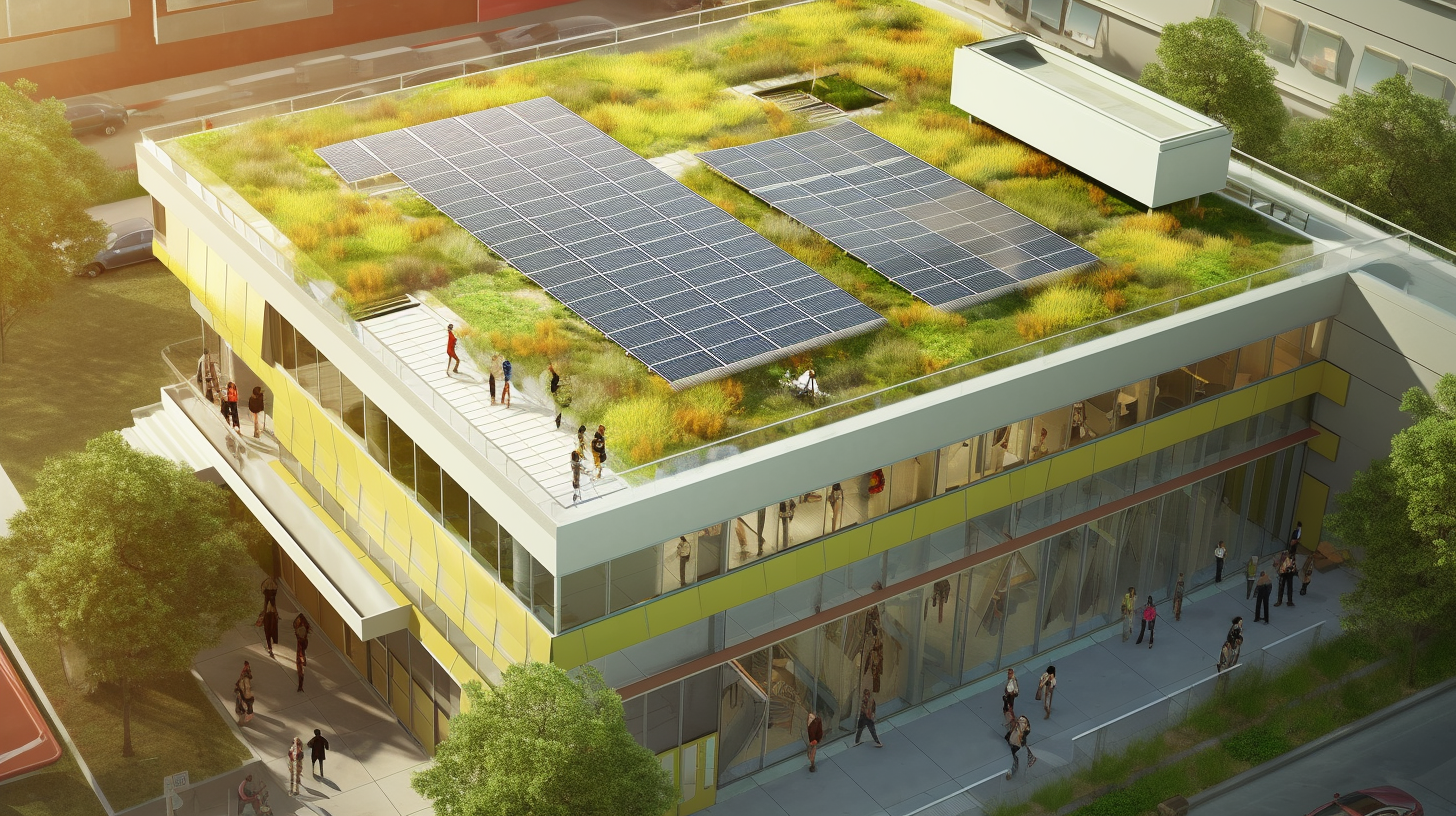Have you ever looked up at the roof of your school or university and wondered what purpose it serves other than keeping the rain out? Well, you might be surprised to know that educational institutions across the globe are turning their rooftops into beautiful, eco-friendly spaces that not only provide insulation but also contribute to a sustainable future.
Green roofing initiatives are taking the world by storm, and educational institutions are leading the charge. From the ivy-covered roofs of Cambridge University to the lush garden terraces of the National University of Singapore, green roofs are transforming the way we think about buildings, sustainability, and education.
But what exactly are green roofs, and why should educational institutions care? Simply put, green roofs are roofs covered in vegetation, soil, and other organic materials that provide a range of benefits, from reducing energy costs to improving air quality.
For educational institutions, green roofs offer a unique opportunity to teach sustainability from the top down, showing students, faculty, and the wider community the practical benefits of eco-friendly construction and design.
In this article, we will explore the world of green roofing initiatives in educational institutions, from their implementation to the future of sustainable building. So, sit back, grab a cup of coffee, and get ready to learn about how green roofing is shaping the future of education and sustainability.
What are Green Roofs?
You may have heard of green roofs, but do you know what they are and how they can benefit your school’s sustainability efforts?
Simply put, green roofs are roofs covered in vegetation, which can be either extensive or intensive. Extensive green roofs have shallow soil layers and require low maintenance, while intensive green roofs have deeper soil layers and require more maintenance. Both types offer numerous benefits, such as reducing building energy usage, improving air quality, reducing stormwater runoff, and providing habitat for wildlife.
By incorporating green roofs into your school’s infrastructure, you can not only reduce your energy consumption and carbon footprint but also provide valuable learning opportunities for your students.
For example, students can learn about different types of vegetation, how green roofs help mitigate the urban heat island effect, and how they can help reduce stormwater runoff. In addition, green roofs can also serve as outdoor classrooms and research sites for students interested in studying green infrastructure and sustainability.
With so many benefits, it’s no wonder that more and more educational institutions are implementing green roofing initiatives to teach sustainability from the top down.
Green Roofing Initiatives in Educational Institutions
Implementing eco-friendly rooftop systems in schools and universities can foster environmental consciousness among students and faculty. As educational institutions are meant to be centers of knowledge and learning, they have a unique opportunity to lead by example and inspire the future generation to embrace sustainable practices. Green roofs are an innovative and practical solution that can provide numerous benefits to the environment and the community, such as reducing stormwater runoff, mitigating the urban heat island effect, and improving air quality.
However, implementing green roofing initiatives in educational institutions can also present some challenges. These can include high initial costs, lack of knowledge or expertise, and limited funding. Despite these obstacles, many schools and universities have successfully integrated sustainable rooftop systems into their infrastructure. In fact, there are several case studies that showcase the benefits and positive outcomes of such initiatives, including reduced energy consumption, increased biodiversity, and improved student and staff morale. With the right planning and support, green roofing can be a valuable investment for educational institutions looking to prioritize environmental sustainability and inspire future generations to take action.
By implementing green roofing initiatives, educational institutions can not only benefit the environment but also teach valuable lessons about sustainability to their students and faculty. Through hands-on experience and exposure to sustainable practices, individuals can gain a deeper understanding of the importance of environmental responsibility and become advocates for positive change. As we move towards a more sustainable future, it is vital to educate and empower the next generation to make a difference. Green roofing initiatives in educational institutions provide a tangible and impactful way to achieve this goal.
Teaching Sustainability through Green Roofing
Let’s explore how green roofs can be used as a tool to educate students about the importance of sustainable practices. By implementing green roofing initiatives in educational institutions, students can learn about the benefits of green roofs and how they can contribute to a more sustainable future.
Here are some educational benefits of green roofs to consider:
- Green roofs can teach students about the importance of biodiversity and how they can contribute to creating habitats for birds and insects.
- Students can learn about the benefits of green roofs in reducing the urban heat island effect and how they can help to combat climate change.
- Green roofs can teach students about the importance of water conservation and how they can help to reduce stormwater runoff.
- By involving students in the planning and maintenance of green roofs, they can develop valuable skills in sustainability, horticulture, and teamwork.
By incorporating green roofing initiatives into educational institutions, students can learn about the benefits of green roofs and how they can contribute to a more sustainable future.
Now, let’s explore how these initiatives can be implemented in practice.
Green Roofing Implementation
Getting started with green roofs can be like planting a seed that grows into a flourishing garden. There are many benefits to implementing green roofing initiatives in educational institutions, including cost benefits and reduced maintenance requirements.
Green roofs can help reduce energy costs by providing natural insulation, which can result in savings of up to 30% on energy bills. In addition, green roofs can improve air quality and reduce stormwater runoff, which can decrease maintenance costs associated with traditional roofing systems.
To ensure the success of green roofing initiatives, it’s important to consider the unique needs and characteristics of each educational institution. Factors such as climate, building design, and available resources must be taken into account when planning and implementing green roofs. Proper maintenance is also essential to ensure the longevity and effectiveness of green roofs. This can include regular inspections, irrigation, and pruning of plant life.
By carefully considering these factors and implementing proper maintenance, educational institutions can reap the many benefits of green roofing initiatives.
As green roofing initiatives continue to gain traction in educational institutions, it’s important to consider the future of these initiatives. The next section will explore potential advancements and innovations in green roofing technology and how they can be implemented in educational institutions.
The Future of Green Roofing in Educational Institutions
Looking ahead to the future of green roofing in educational institutions, there’s enormous potential for expansion.
As more and more institutions recognize the benefits of green roofing, it’s likely that we’ll see a significant increase in the number of schools and universities implementing these initiatives.
The impacts of such expansion on the environment and society could be profound, with reduced carbon emissions and improved air quality just a few of the potential benefits.
Moreover, advancements in green roofing technology continue to emerge, providing even more opportunities for schools to lead the way in sustainability.
Potential for Expansion
You can expand the impact of green roofing initiatives in your educational institution by exploring new opportunities and partnerships. The green roof market is constantly growing and evolving, offering new and innovative technologies that can help your institution become more sustainable.
While the initial cost of installing green roofing may seem daunting, the long-term cost effectiveness of these initiatives is undeniable. By reducing energy costs, improving air quality, and increasing the lifespan of your roof, green roofing can provide significant financial benefits in addition to its environmental advantages.
To further expand the potential of green roofing in your institution, consider partnerships with local organizations and businesses. Collaborating with these groups can not only provide funding and resources for your initiatives, but also increase awareness and support for sustainability within your community.
By working together to promote environmentally friendly practices, you can create a positive impact on both the environment and society as a whole. With the right approach and vision, green roofing initiatives can be a powerful tool for teaching and promoting sustainability in educational institutions.
Impacts on the Environment and Society
The flourishing of green roofs can lead to significant environmental benefits, particularly in terms of air pollution reduction. Green roofs absorb carbon dioxide and other pollutants from the atmosphere, reducing the level of harmful emissions that are released into the air. This is especially important in urban areas, where emissions from vehicles and buildings contribute to poor air quality.
Additionally, green roofs can improve the health and well-being of local communities. By providing a green space within urban environments, green roofs offer a peaceful retreat and a place for people to relax and connect with nature.
Community engagement is also a key benefit of green roofs. By installing green roofs in educational institutions, students and faculty can be educated on the importance of sustainability and the benefits of green infrastructure. This can inspire and motivate individuals to take action to protect the environment and promote sustainable practices.
Furthermore, green roofs can serve as a platform for community events and activities, bringing people together to celebrate and enjoy the benefits of green space.
Transitioning to the subsequent section about advancements in green roofing technology, it’s clear that the potential for green roofs is vast and exciting. With new technology and innovations, the benefits of green roofs will only continue to grow.
Advancements in Green Roofing Technology
Get ready to discover some exciting advancements in green roof technology that will blow your mind! As the demand for sustainable building practices increases, the development of new and innovative green roofing materials has become a top priority.
Here are three examples of the latest advancements in green roofing technology:
- Green roofs that require minimal maintenance: New materials have been developed that require less watering and weeding, making green roofs easier to maintain and more cost-effective in the long run.
- Modular green roofs: Modular systems allow for easy installation and customization, making them a popular choice for retrofitting existing buildings. They also offer greater flexibility in terms of design and function.
- Lightweight green roofs: Traditional green roofs can be heavy, requiring additional structural support. However, lightweight materials such as foam-based systems have been developed, reducing the load on the building and making green roofs a viable option for more buildings.
These advancements not only provide environmental benefits, but also economic benefits. Green roofs can help reduce energy costs by providing insulation, as well as extending the lifespan of the roof itself. Additionally, they can increase the value of a building and improve the surrounding air quality.
As these technologies continue to evolve, the potential for green roofs to become a standard feature in buildings of all types and sizes becomes increasingly promising.
So why not take advantage of these advancements and incorporate a green roof into your own educational institution? Not only will it offer a valuable learning experience for students, but it will also demonstrate your commitment to sustainable practices and provide long-term economic benefits for your institution.



